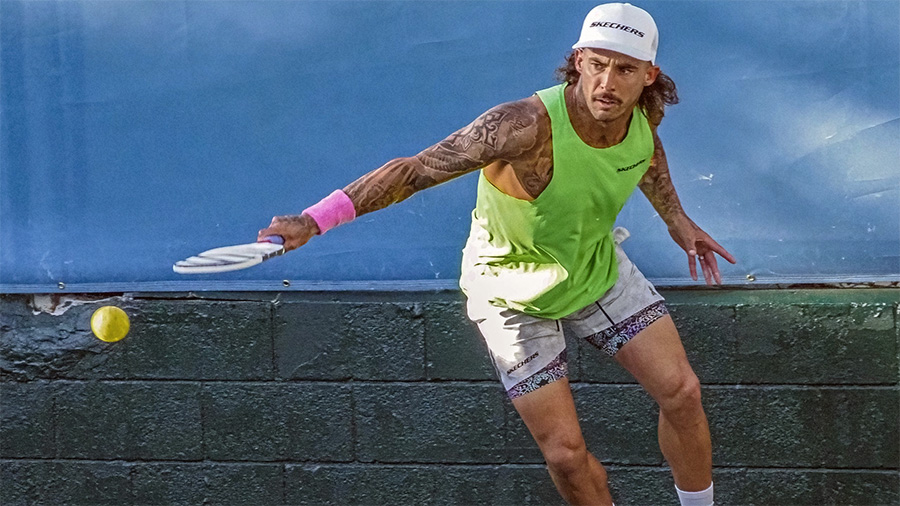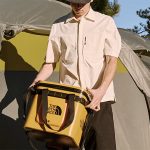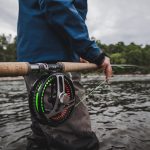The 2025 Manufacturers Sales By Category Report from the Sports and Fitness Industry Association (SFIA) found that the sporting goods industry grew 2.9 percent in 2024, marking its slowest growth since 2020, but reached a record high for the year.
SFIA’s latest report found that some key categories, including martial arts gear, tennis balls, pickleball racquets and outdoor/adventure footwear, had delivered double-digit growth and sales across various categories while remaining far above pre-pandemic levels.
Other categories that saw 2024 year-over-year growth outpace the market trend included outerwear, baselayers, team uniforms, running footwear, fitness/workout footwear, volleyball, and archery equipment.
Overall, the SFIA reports that sales for the sporting goods industry, including equipment, sports apparel and licensed athletic footwear, reached a record high of $116.7 billion.
Due to insufficient statistically significant data, 2024 sales data for the exercise equipment category, SFIA excluded it to maintain accuracy.
The 2.9 percent increase followed gains of 3.9 percent in 2023, 5.1 percent in 2022 and 15.9 percent in 2021, as many categories during the early stages of the pandemic saw the benefit from stay-at-home orders and restrictions on social gatherings.
Sales for the active outdoor industry surged 29 percent over the last five years since 2019, the last year before the pandemic. The growth rate in 2024 was higher than over half of the years from 2010 to 2019, nearly matching the 2.8 percent increase in the U.S. GDP last year.
Traditionally, sports and fitness sales patterns mimic GDP growth.
Total Sports Equipment Sales Led by Martial Arts, Pickleball
Total sports equipment sales climbed 1.1 percent to $33.3 billion in 2024, up 26.6 percent over the last five years versus pre-pandemic levels.
The most significant 2024 gain in the equipment category was in martial arts, where sales jumped 17.3 percent year-over-year to $745.0 million and up 62.3 percent over pre-pandemic levels. The sport has benefited from the popularity of mixed martial arts (MMA) and its largest spectator venue, the Ultimate Fighting Championship (UFC).
Volleyball equipment sales grew 6.4 percent to $108.5 million and were up 28.8 percent over the last five years. Archery equipment sales reached $470.2 million, up 5.0 percent year-over-year and up 24.8 percent since 2019.
Total pickleball equipment sales advanced 9.0 percent to $240.2 million and are up 42.4 percent over the last two years. Comparisons to 2019 were not available.
Several equipment categories saw modest gains amid more cautious consumer spending in 2024 but remain well above pre-pandemic levels.
Total golf equipment sales were up 1.1 percent to $4.4 billion, with both balls and clubs seeing similar gains. Compared to pre-pandemic levels, golf equipment sales vaulted 85.5 percent, with balls ahead 114.1 percent and clubs rising 65.9 percent.
Total tennis equipment sales grew 2.0 percent last year to $279.2 million and are up 23.0 percent over the past five years. Table tennis totaled $70.0 million, up 1.6 percent year over year and 30.2 percent since 2019. Water sports equipment categories increased 1.3 percent year-over-year to $705.6 million and expanded 51.4 percent versus pre-pandemic levels.
In the team sports equipment category, the strongest 2024 gain was in football, up 5.0 percent to $780.5 million, led by gains in protective gear, followed by lacrosse, up 5.0 percent to $97.3 million; baseball/softball, 3.0 percent to $826.2 million; ice hockey, rising 2.6 percent to $318.6 million; and total soccer, 1.7 percent to $466.3 million. Basketball equipment was the only declining team sports equipment category, losing 1.0 percent to $688.5 million.
SFIA’s findings show that individual sports did not benefit from the pandemic equally, although all have increased over the last five years. Compared to 2019 levels, the basketball equipment category has seen the strongest growth, up 51.8 percent, followed by football, up 36.0 percent; baseball/softball, 20.2 percent; ice hockey, 14.3 percent; soccer, 7.5 percent; and lacrosse, 0.4 percent.
Several outdoor equipment categories declined in 2024 as consumers pulled back discretionary spending on many products amid inflationary pressures.
The total camping equipment category was down 1.9 percent to $3.9 billion. Gains in backpacks (up 4.0 percent to $1.02 billion) were offset by declines in sleeping bags/air beds (down 5.5 percent to $792.6 million), coolers/chests (down 3.7 percent to $737.0 million) and tents/shelters (off 2.9 percent to $451.1 million). Other sub-categories posting year-over-year declines included jugs/containers, furniture, and stoves/fuels.
Compared to 2019, sales in the overall camping equipment category were up 30.4 percent, following significant surges in 2020 and 2021. The gains over the last five years were led by a 62.0 percent hike in backpacks, with most other categories up around 20 percent.
Similar to camping, total snow sports were down 2.7 percent in 2024 to $823.6 million but surged 53.2 percent over the last five years. Most categories saw decreases in 2024, except for snow and cross-country skiing, which recorded growth.
Among hunt & fish categories, fishing equipment sales were up 2.5 percent in 2024 to $3.6 billion and are up 28.6 percent over the last five years. Firearms sales reached $4.4 billion in 2024, up 1.4 percent year-over-year and only gained 7.5 percent in the previous five years.
Athletic Footwear Expands 4.1 Percent
The athletic footwear category grew 4.1 percent in 2024 to $22.4 billion, with every category except football cleats showing year-over-year growth. Among the top five largest categories, sales of running footwear were up 3.8 percent to $6.6 billion; sales of classic/originals grew 2.7 percent to $3.1 billion; kids’ athletic shoes were flat at $2.93 billion; fitness/workout jumped 8.3 percent to $2.3 billion; and casual/fashion was up 3.7 percent to $1.38 billion.
Across athletic footwear categories, the biggest gainer in 2024 was in outdoor/adventure, up 21.7 percent to $1.1 billion. Among other larger categories, basketball footwear sales reached $1.3 billion, up 3.3 percent, and skate/surf footwear sales amounted to $1.0 billion, nudging up 1.2 percent year-over-year.
Compared to pre-pandemic levels, overall athletic footwear sales were up 33.8 percent, with the gains over the last five years led by fitness/workout, surging 118.5 percent, followed in the top five by walking, 55.0 percent; outdoor/adventure, 44.6 percent; golf, 44.3 percent; and casual/fashion, 35.4 percent. Also, substantial gains over the last five years were in running, up 33.8 percent; sport sandals/slides, 33.2 percent; tennis, 32.5 percent; classic/originals, 20.0 percent; and basketball, 18.2 percent. Smaller gains were in skate/surf and team sports categories outside of basketball, with volleyball footwear showing a decline.
Athletic Apparel Led by Outerwear, Baselayers
Athletic apparel category sales grew 3.2 percent to $30.6 billion, with the most significant gains in outerwear, up 6.5 percent to $2.4 billion; baselayers, 5.4 percent to $1.05 billion; and swimwear, 4.0 percent to $2.2 billion. Among other largest athletic apparel categories, shorts/skirts’ sales totaled $12.3 billion, up 3.3 percent; fleece/sweats were $4.1 billion, up 2.5 percent; bottoms’ sales totaled $1.9 billion, ahead 0.9 percent; and socks totaled $1.6 billion, up 2.1 percent.
Over the last five years, fleece/sweats were the big winners, with sales jumping 120 percent. The category particularly benefited from the initial stay-at-home orders and now from the continued remote work trend. Other athletic apparel categories seeing outsized gains over the last five years were outerwear, up 70.3 percent; bottoms, 66.3 percent; base layer, 58.1 percent; shirts/tops, 57.6 percent; shorts/skirts, 53.1 percent; and sports bras, 49.5 percent.
Caps/hats’ sales were up 35.2 percent, and socks ahead 21.9 percent versus pre-pandemic levels. Swimwear hasn’t fully recovered since the initial hit from the pandemic, with category sales down 20.7 percent over the last five years.
Total team uniforms were up 5.8 percent in 2024 to $1.7 billion and ahead 29.4 percent over the last five years. Each team sport was up in uniforms around that rate in 2024. Over the last five years, the gains for team sports uniforms were led by basketball, up 34.4 percent; volleyball, 33.9 percent; soccer, 28.6 percent; and football, 21.5 percent.
The SFIA Manufacturers Sales by Category Report’s estimates are based on wholesale dollar sales volume by category. The SFIA contacts 300 industry C-level executives for its sales estimates in categories for which it is familiar. The SFIA refines its estimates with research from corporate reports, other industry sales reports and public research.
Image courtesy Skechers
















